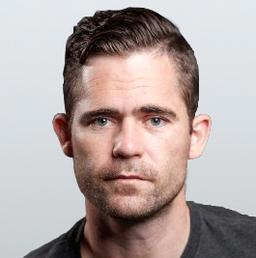Bois de Boulogne had long been a section of Parisian forest dedicated to serve strictly as a private hunting ground. In 1777, King Louis XVI became the first monarch to open the forest to the public. When the Second French Empire was established in 1852, Louis-Napoleon, now Napoleon III, chose to cede the vast tract of land to the city of Paris and turn it into a large public park, with lakes, small islands, a large artificial waterfall, paths and trails, and the planting of 420,000 trees. The project was completed in 1858 and provided Parisians with amusements like cafes, boat rentals, and shooting galleries. The park could be used and enjoyed by all classes of people. The restaurants, La Grande Cascade and Le Pré Catelan, however, could only be afforded by the wealthy.
In February 1863, in the midst of the American Civil War, some of New York’s prestigious and wealthy citizens formed the Union League Club of New York City. It began with 66 members, and by the end of the year it had garnered more than 500. The Union League Club promoted, as the name infers, the “union” of the country during the country’s disunion. Looking to the future and in the hope that the war would end with reunification, one of the goals of the Club was “to enforce a sense of the sacred obligation inherent in citizenship.”
An Art Vision at Dinner

That same year, Jay was elected president of the Union League Club of New York and he helped lead the charge to establish that “National Institute and Gallery of Art” vision. He remained the president of the Club through 1869, until becoming ambassador to Austria. The distinguished men of New York City seized upon the momentum for a national art gallery.
A Plan Approved
Jay and several others worked to present their national gallery plan to the Union League Club’s executive committee. After approximately a year, the group presented its idea in October of 1868, and it was quickly approved. The Club established its Art Committee, composed of some of the nation’s leading artists, including John F. Kensett, Worthington Whitredge, John Quincy Adams Ward, Samuel P. Avery, and George P. Putnam.Convincing the Locals

Approximately 300 arrived, even in poor weather. Jay, already in Vienna as ambassador, could not attend. The spirit of the Art Committee’s report, which proclaimed that New York City “with its belongings, may claim to be third in the civilized world, is it not time to begin something in the shape of a permanent gallery and museum of Art, which, in its dimensions, in the character of its collections, and in the liberal freedom with which they are thrown open to the public, shall be worthy of the great city of a great nation, and shall in some degree emulate those of the old world?”
The Work of the Committee
By December, the committee was organized. Such was the enthusiasm behind the endeavor that the committee number was raised from 50 to 116 by the first official meeting on Dec. 7, 1869. The goal of the meeting was to draw up an organizational plan for a Metropolitan Art Museum Association and to nominate its officers.On Jan. 4, 1870, a subcommittee presented a report indicating the purpose behind the museum, “That it should include not only collections of paintings and sculpture, but should also contain drawings, engravings, medals, photographs, architectural models, historical portraits, and specimens illustrating the application of art to manufactures.”
It was also recommended that the officers of the Museum should include one president, three vice presidents, nine trustees, a recording secretary, a corresponding secretary, a treasurer, and a 13-member executive committee. On Jan. 31, the first officers were elected, with Bryant as one of the vice presidents and John Taylor Johnston as president, an office he would hold for 19 years. Several of the Union League Club’s original Art Committee members were elected as officers, including Kennsett, Ward, and Putnam.
Collecting Works of Art
The trustees’ first quarterly meeting took place on June 15, and it was agreed that the first order of business was to raise funds for the museum. The goal was $250,000 (approximately $6 million today). By the end of the year, $100,000 was raised. Nonetheless, the timing for purchasing pieces of art proved ideal. William Blodgett, a member of the executive committee, traveled to Europe shortly after the June meeting.On July 19, the Franco-Prussian War broke out. During this war, which ended in May 1871, the Bois de Boulogne was pummeled by mortars. Le Pré Catelan, where John Jay proclaimed his vision for the museum, however, thankfully survived.
As the war raged, Blodgett found himself surrounded by opportunity to purchase classic works of art at a discounted price. In what has been called the Purchase of 1871, Blodgett accumulated 174 paintings, including by masters like Anthony van Dyck, Nicolas Poussin, and Giovanni Battista Tiepolo. The vast purchase set the foundation of the Museum’s collection.
Additionally, on Nov. 21, 1870, the Museum received its first work of art. It was a 3rd-century Roman sarcophagus, gifted to them by the American vice consul at Tarsus, J. Abdo Debbas.

By 1872, the Metropolitan Museum of Art had leased its first “secure edifice, for the benefit of the public” at the Dodworth Building at 681 Fifth Avenue. The vision of John Jay and many others was finally realized on Feb. 20, 1872, when the museum opened its doors, becoming what Tuckerman noted as that “safe and eligible place of deposit and exhibition for pictures and statuary.” Today, the Metropolitan Museum of Art stands as one of the world’s greatest art museums.









